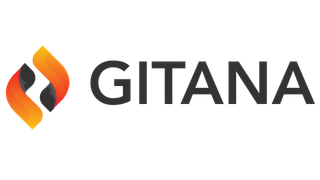Found 589 results for "gitana 4.0 developers api resources branch post-repositories-repositoryid-branches-branchid-merge"
The search executed in 0.0029 seconds. That's fast.

|
Gitana 4.0 / Content EngineDocumentation Reference Unlock content value with Gitana's high-performance platform, enabling quick, secure publishing to boost market engagement. (Gitana 4.0)
Score: 1.8948
|

|
Gitana 3.2 / Guide / Guide / Deployment / Deployment MappingsDocumentation Reference Optimize Cloud CMS deployment with S3, FTP, or File System Handlers using custom configurations for resource mapping. (Gitana 3.2)
Score: 1.8545
|

|
Gitana 4.0 / Content Engine / Deployment / Deployment MappingsDocumentation Reference Optimize your Cloud CMS deployments using powerful mapping handlers for tailored file system strategies. (Gitana 4.0)
Score: 1.8545
|

|
Gitana 3.2 / Guide / Guide / Integrations / Amazon Web Services / Amazon SNSDocumentation Reference Unlock real-time messaging with Amazon SNS in Cloud CMS. Seamlessly integrate, manage notifications, and enhance app performance. (Gitana 3.2)
Score: 1.8321
|

|
Gitana 4.0 / Content Engine / Integrations / Amazon Web Services / Amazon SNSDocumentation Reference Optimize your messaging experience with Amazon SNS, a versatile cloud-based notification service for mobile apps. (Gitana 4.0)
Score: 1.8321
|

|
Gitana 3.2 / Guide / Guide / UI Developers Guide / SamplesDocumentation Reference Explore sample UI configuration and extension guides, including developer menu items and release menus, for building custom modules. (Gitana 3.2)
Score: 1.8282
|

|
Gitana 4.0 / Developers / User Interface Customization / SamplesDocumentation Reference Explore sample configurations for UI extensions, including developer menu items and releases menu item guidance. (Gitana 4.0)
Score: 1.8282
|

|
Gitana 4.0 / Reference / Types / Access PolicyDocumentation Reference Explore our Access Policy API documentation, featuring methods to create, read, update, and delete policies for seamless platform integration. (Gitana 4.0)
Score: 1.8206
|

|
Gitana 4.0 / Getting Started / Working with Content / BranchesDocumentation Reference Manage content with branches in Cloud CMS, enabling isolated changes, teamwork, and streamlined collaboration. (Gitana 4.0)
Score: 1.7964
|

|
Gitana 3.2 / Guide / Guide / Workflow / Workflow Handlers / Sync NodeDocumentation Reference Sync nodes automatically within workflows to designated branches, with optional deletions and association copying. (Gitana 3.2)
Score: 1.7745
|

|
Gitana 4.0 / Content Engine / Workflow / Workflow Handlers / Sync NodeDocumentation Reference Sync Node handler automates sync, copy, and deletion of workflow nodes to a target branch, even frozen ones. (Gitana 4.0)
Score: 1.7745
|

|
Gitana 3.2 / Guide / Guide / Integrations / OktaDocumentation Reference Integrate Okta with Cloud CMS for secure user authentication and SSO using SAML 2.0 or JWT. Learn more about our solutions. (Gitana 3.2)
Score: 1.7654
|

|
Gitana 4.0 / Content Engine / Integrations / OktaDocumentation Reference Secure your application's user access with Okta's cloud software, supporting SAML 2.0 and JWT integration with Cloud CMS. (Gitana 4.0)
Score: 1.7654
|

|
Gitana 3.2 / Guide / Guide / Conditions / MergeDocumentation Reference Optimize merge conditions for nodes with specific branch or release properties using regex matching. (Gitana 3.2)
Score: 1.753
|

|
Gitana 4.0 / Content Engine / Behaviors / Conditions / MergeDocumentation Reference Configure merge conditions with regex for source, target branches, or release. Evaluate nodes merging across branches. (Gitana 4.0)
Score: 1.753
|

|
Gitana 4.0 / Reference / Types / NodeDocumentation Reference Explore the structured representation of nodes and associations in a repository. Enhance content management skills with interactive APIs. (Gitana 4.0)
Score: 1.7509
|

|
Gitana 3.2 / Guide / Guide / Features / Auto Analyze TextDocumentation Reference Enhance your content with automatic text analysis for improved search indexing and insights. (Gitana 3.2)
Score: 1.7389
|

|
Gitana 3.2 / Guide / Guide / Features / Auto OCR ExtractDocumentation Reference Effortlessly extract and index text with automatic OCR for streamlined content processing and searchability. (Gitana 3.2)
Score: 1.7389
|

|
Gitana 3.2 / Guide / Guide / Actions / Send EmailDocumentation Reference Effortlessly send emails by specifying provider, recipient, sender, body, and subject for flexible configuration. (Gitana 3.2)
Score: 1.7353
|

|
Gitana 4.0 / Content Engine / Behaviors / Actions / Send EmailDocumentation Reference Effortlessly send emails with custom configurations; define provider, recipient, sender, email body, and subject. (Gitana 4.0)
Score: 1.7353
|

|
Gitana 3.2 / Guide / Guide / API / PaginationDocumentation Reference Optimize your data retrieval with Cloud CMS pagination, organizing results into manageable pages for efficient browsing. (Gitana 3.2)
Score: 1.7343
|

|
Gitana 3.2 / Guide / Guide / Features / Copied FromDocumentation Reference Track copied node sources with 'f:copied-from'. Automatically identifies content origins during copy operations. (Gitana 3.2)
Score: 1.7218
|

|
Gitana 4.0 / Content Engine / Aspects / Copied FromDocumentation Reference Track node history and identify copy origins with the automatic `f:copied-from` feature for effective content management. (Gitana 4.0)
Score: 1.7218
|

|
How can I reuse connections with the Java Driver?Support Article Optimize Java Driver connections with thread-local variables for Cloud CMS, enhancing multi-threaded app performance and security. (Support 1.0)
Score: 1.7069
|

|
Gitana 4.0 / Getting Started / Navigating the User Interface / Instant PreviewDocumentation Reference Instant preview your content changes with Cloud CMS, ensuring fast, efficient, real-time updates without IT hassle. (Gitana 4.0)
Score: 1.6991
|
